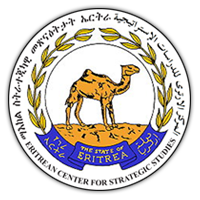August 31, 2018
Scientific Way of Handling Poultry Farming

Efficient management of Poultry-feed would result in a success of the poultry farming business. Poultry-feed preparation requires some resources in order to make chickens healthier and lay sufficient amount of eggs. The Ministry of Agriculture (MoA) has been undertaking environmental research to enable farmers exploit their surroundings for poultry-feed preparation. Ms. Lidya Weldu, an expert in the poultry development section and a member of the crop and animal development at MoA, has made a lot of research in the field. Ms. Lidya advises poultry farmers on how to prepare a cost-less Poultry-feed and get the most out of it by just looking at their surroundings.
A content-full poultry-feed contributes to the healthy development of the chickens. Those important ingredients that should be provided to chickens are sourced from carbohydrate, proteins, fibre, minerals, vitamins and water. Experts in poultry farming recommend that poultry– feed has to be consumed in a short period of time after its production to prevent loss of its vitamin content due to a long-time storage. Chickens, just like human beings, need to consume carbohydrate to generate energy. The more carbohydrates the feed contains the less the chickens need to consume, which enables the farmer to get more from little. On the contrary, lower content of carbohydrate in the feed means the chickens must consume more food.
Minerals are also important ingredients that should be included in poultry feed. Minerals such as Calcium and Phosphorus are highly regarded. This is because bones of the chicken are built by 99% of Calcium and 80% of Phosphorus. Unlike these two minerals, other minerals such as iron, zinc, iodine are required less most of the time. At times of yielding eggs, the amount of minerals such as calcium and phosphorus chickens need grow by the amount of vitamin D put in the food provided. The more vitamin D a farmer puts in the food, the lower the amount of minerals supplied. An amount of 1:1 or 2:1 of calcium and phosphorus is required for chickens which are in a developing stage. While in the period of laying egg the ratio can reach up to 6:1. In other words, a four gram of calcium per day is required for the production of an egg shell. A farmer can easily provide his chickens with phosphorus by boiling bones and meat of animals and mixing it in their food.
Vitamins are important in guarding the chickens against diseases or outbreaks. Vitamins can be easily found in new leaves of plants, seeds and insects. Green plants such as Alfa Alfa are liked and can be easily consumed by chickens. Such green plants, in addition to their rich content of Xanthopyll element, they are the main ingredients that give the egg’s yolk a yellow colour.
Water, is the most vital ingredient which accounts for 70% of the chicken’s body. Continuous supply of clean water helps chickens regulate the various ingredients and wash away acid elements in their body. Lack of adequate water significantly affects the yield of eggs. According to the Poultry farming experts, this is commonly seen in hot areas which can also cause death to chickens.
Poultry-feed should maintain a balanced amount of all these ingredients. Experts divide the poultry-feed into categories. Crops and its by products, roots and oil foods are categorized as sources of carbohydrate. By-products of oil foods and cereals, meat, bones, buttermilk and insects are sources of proteins. Left over vegetables are a good source of vitamin. Whitewash and salt are sources of minerals.
The age of a chicken determines the kind of food it needs. There are three stages in a chicken’s development. The first stage starts when the egg hatches and lasts until the eighth week. At this stage the chicken needs around 3000 calories from the food it consumes. This means, on average it needs to consume 200 kg of protein in the whole period. In other words, it needs 30- 40 grams of fibre, 30-50 grams of fat, 9 grams of phosphorus in one kilogram of food intake. With the development of the chicken, the amount of carbohydrate intake decreases and the amount of protein it needs decreases with it. The second stage, which locally is named as ‘Geshgesh’, covers the ninth until the 20th week. At this stage the chicken requires 2,750 calories. In one kilogram of intake, the chicken has to get 160 grams of protein, 30- 40 grams of fibre, 30-50 grams of fat, eight grams of calcium and seven grams of phosphorus.
The maturity stage, when the chicken starts to lay eggs, is the third stage. At this stage the chicken needs 2750 calories. On average 170 grams of protein, 30-80 grams of fibre, 30-80 grams of fat in one kilo provided.
When poultry farmers make poultry-feed some of the important and most commonly used resources they need are barely, maize, lentil, millet, fish, whitewash and wheat. Chickens in Eritrea are fed with the leftover of people’s dish and from the environment and, in this way, they minimize half of the farmer’s task to feed them. However, continuous monitoring of the chickens is also instrumental to gauge whether the food given is worth keeping. Some criteria farmers need to check while feeding their chickens are weight and development of the chicken, the amount of yield, quality or content of the regular food given and the environment.
Chickens with heavy weight consume more food than those with lighter weight. To maintain a balanced weight and metabolism rate, a 2kg chicken on average needs to consume only 70 grams of food per day. Further, an additional 50 grams of food is needed for the chicken so that it can maintain a 2kg weight. A chicken’s development speed represents the existing weight development which requires more food provision. For every gram’s development in weight, one to five grams of food should be provided in addition to the regular food. Fast development requires farmers to implement changes in food provisions and that contributes to the healthy development of the chicken.
The amount of yield is directly connected with the food intake. The more balanced the food intake the higher the quantity of eggs. The content, particularly carbohydrate, of the regular food provided to the chickens’ is what limits the chickens amount of consumption. Poultry farming experts advice that carbohydrate provision should be given in a balanced way. Environmental conditions also affect the metabolism of the chickens. Chickens that are kept in cages need lower energy because they do not move a lot. Cool climate makes chickens consume a lot, and therefore, should be given food with high content of carbohydrate so that they can lay good amount of eggs. Research based poultry farming is increasingly getting popular, this is why the Ministry of Agriculture has been working to raise the awareness of farmers about the importance of maintaining a balanced poultry feed in their farms.


